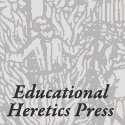Personalised Learning for Young People with Profound and Multiple Learning Difficulties
by Andrew Colley published by Jessica Kingsley 2013
Andrew Colley has written a book which will be very inspiring, illuminating and, at the same time, practical to anyone who is working with young people with profound and multiple learning difficulties. It is also more widely important for its refreshing contribution to the writing on personalised learning and, in this area, I found the focus on relationships particularly notable.
In the first chapter ‘Not Just Babysitting’, Andrew Colley introduces us to some of the young people who we will meet during our reading of the book. This creates a practical and relational thread which runs throughout the book grounding practice in the lived reality of each young person’s life. The chapter also provides a helpful orientation to the reader, at this early stage of the book, with a section on Labels and Definitions.
The second chapter ‘Getting to Know You’ begins with some brief definitions of the conditions which teachers may come across in their practice. Most striking about this chapter is the description of the care, sensitivity and time that is taken to really get to know each young person and indeed their parents. This is evident, not only in the practical suggestions, but in the underlying principles which inform all the practice. Andrew Colley writes: “ Happiness, communication and independence: these three things should be at the heart of any curriculum for young people with complex needs.”
Towards the end of the second chapter there is another paragraph which I found arresting:
“ At this period of observation and interaction…..we will have learnt a great deal about each of the young people we will be working with. Above all, though, we have begun to see each one as they are. There is no need to impose a ready-made, off-the-peg curriculum, because each young person contains within him his own unique curriculum”.
I found Chapter Three, ‘He Meant to do That’, of particular interest because of my previous work with pupils excluded from school and young people in the criminal justice system. Andrew Colley is very helpful indeed in understanding the behaviour of young people with profound and multiple learning difficulties. He provides examples of how think about behaviour, how to put each behaviour into context and how to orientate ourselves towards responding skillfully. Through his writing he provides the kind of coaching which I have often found so missing in school environments. For example: “ The ability to lower our own level of arousal to stress, to breathe, to stay still, to slow down, to be calm and focused. Above all to keep it simple. When dealing with a young person like Daniel, less is usually better than more.”
In Chapter Four ‘What do You Actually Teach Them’, Andrew Colley states that ‘ a curriculum for any young person with complex learning difficulties…..must be a direct response to his or her actual needs. It has to grow out of everything we know about them. So, if there are 12 students in a class, there will be 12 curricula.‘ He goes on to explore this theme through sections ranging from ‘What is Learning?’ to ‘Being Happy‘ to ‘Independence‘ all of which have important relevance to any educational setting.
After reading the very practical and helpful Chapter Five ‘Environment, Staffing and Timetable’, I was intrigued how Andrew Colley would deal with ‘Target Setting and Assessment‘ in Chapter Six. He states at the beginning of the chapter:
“This is a non-linear, organic approach to their education. An education for life, where the focus is on creating an environment where they can learn at their own pace. An education where they are not constrained by external expectations, external curricula, external targets and assessments. An education where they are not held accountable against measurable criteria set by someone else. An education which is about each individual person.”
Then he goes on to say:
“ It’s difficult, though, to get away from some form of target setting, so as teachers of young people with complex needs we have to learn to make targets work for us and, more importantly, for the young person we are working with.”
These two arguably irreconcilable positions have exercised some educators for generations, particularly during the last thirty years. I feel that Andrew Colley, in subsequent pages, does a great job in exploring, and sharing with us, how he reaches a workable reconciliation of these positions in his own practice. I would recommend this chapter to anyone in any educational setting who would find it helpful to explore theory and practice in this area.
With the same care demonstrated in Chapter Two ‘Getting to Know You‘, in Chapter Seven ‘Moving On’, Andrew Colley explores the issues of the transition of leaving school for young people with complex needs. In the final chapter ‘Edward’s Story’, in keeping with the thread of relatedness throughout the book, Andrew Colley writes about how the personalisation process might be used to create a unique curriculum for Edward.
I feel that this book is about much more than its title. Yes, it is about young people with profound and multiple learning difficulties but, more broadly, it is about the care, attention and respect we pay to each other in any education setting and beyond that too. It is unusual in that it is a book with a big heart with feet firmly on the ground!
Josh Gifford
Novel approaches to home-based education
Skellig by David Almond (1998)
My Name is Mina by David Almond (2010)
Home School by Charles Webb (2007)
The Particular Sadness of Lemon Cake by Aimee Bender (2011)
__________________________________________________
David Almond’s novel Skellig came out in 1998. It won the Carnegie Medal, the Whitbread Children’s Book of the Year and a string of international prizes. It is written for children and about children – the teller of the story is an adolescent boy, Michael – but is such a gripping and profound tale, so well told, that it speaks to all ages.
Michael discovers a strange being in the crumbling garage in his garden. The creature seems barely alive, is dressed in filthy tatters, and has a craving for 27 and 53 from the Chinese takeaway (“food of the gods!”), washed down with Newcastle brown. It appears to have wings. Could it be an angel? Michael shares his discovery with Mina who lives a few door away, and who, to his surprise, doesn’t go to school. “My mother educates me,” she says, because “the mind needs to be opened out into the world, not shuttered down inside a gloomy classroom”.
The book isn’t “about” home education; it’s about the angel (?) Skellig, and about Michael’s desperate concern for his new baby sister struggling for life in hospital. But for readers of this journal who value home-based education, the glimpses we are given of Mina’s life have a special interest, particularly the contrasts between her way of learning and Michael’s school-based education. One day, Michael finds Mina in her front garden copying a drawing of a bird’s skeleton into her sketch book. “You’re doing science?” he says. She laughs at his simplified labelling of what she’s doing. “See how school shutters you,” she says. “I’m drawing, painting, reading, looking. I’m feeling the sun and air on my skin. I’m listening to the blackbird’s song. I’m opening my mind. Ha! School!” Because of his worries about his baby sister, Michael has some days off school. His dad is concerned: “Maybe you could go back soon, eh? Don’t want to miss out on too much.” “I learn a lot from Mina”, says Michael. “She knows about lots of things, like birds and evolution.” Another day, Michael takes his homework into Mina’s garden. She mocks his quiz-like worksheet. She flicks through the book he has brought from school, and says it looks good – “but what’s the red sticker for?” “It’s for confident readers,” he says. “It’s to do with reading age.” “And what if other readers want to read it?…And where would William Blake fit in?…’Tyger! Tyger! Burning bright / In the forests of the night.’ Is that for the best readers or the worst readers? Does that need a good reading age?” She later apologises for this outburst: “One of the things we hate about school is the sarcasm that’s in them. And I’m being sarcastic.” As her mum says, “She’s a madam sometimes.”
So how did Mina come to be home-educated? How happy I was to find that David Almond has provided the answer to this question in his prequel to Skellig, entitled My Name is Mina, published in 2010. The flyleaf of the paperback edition is full of praise from reviewers: “joyous”, “life-affirming”, “exquisite”, “poignant”. Even the Times Educational Supplement is there with the rest. Yet not one quote indicates that the book is in fact a glorious celebration of autonomous learning and deschooling.
Mina tells her own story in this book. She is in love with words, and playing with words is one of her great passions. The typography of the book mimics the handwritten pages of her journal, with some words shouting from the page in bold black slashes, some pages white on black (her journey to the Underworld, for example) and much concrete poetry. This love of words and story-telling does not stand her in good stead at St Bede’s Middle. Her teacher insists that nothing should be written without a plan. This seems like nonsense to Mina, but she wants to be what they call “a good girl”, so she does try. Her plan meets with approval but, as she records, “When I started to write, the words wouldn’t keep still, wouldn’t obey. The words danced like flies. They flew off in strange and beautiful directions and they took my story on a very unexpected course. I was very pleased with it…” But the teacher is not impressed. “She held the plan in one hand and the story in the other. ‘They do not match!’ she said in her screechy voice.”
Things come to a head on SATs day. Mina describes the stress at St Bede’s: “Everybody was so concerned that everybody would all turn out to be better than the average of children of our age throughout the country! Everybody was so concerned that we would get Level 4 and Level 5 and Level 99! We shouldn’t get worked up about it, though!…Just relax! JUST RELAX!” Mina relaxes, and sets about her essay: Write a description of a busy place. She calls it “GLIBBERTYSNARK”, and writes two rip-roaring pages of nonsense full of invented words and original spellings. She achieves Level 0 (Well Well Well Below Average), causes her teacher to swear in front of the whole class (“You are an utter bloody disgrace!”) and, to the Headteacher’s relief, is removed from school by her mother.
Mina’s mum is a single parent who (fortunately) works from home. In order to spend more time with Mina, she cuts down her working hours. This means they have very little money for luxuries like travel – they travel in their minds, through books, dreams, conversation and writing. They are very happy. “I love being home-schooled, when we don’t have to stick to subjects and timetables and rules.” “We learn so much, and wonder so much, and explore so much, and ideas grow and take flight… Mum says it can’t last forever, though. She says I’ll become too isolated, especially as I’m an only child. She even says that schools aren’t really prisons and cages. Yes, they bloody are! I tell her. She shakes her head and grins. Language! she says.”
Even Mina, who hates school, sometimes thinks it would be interesting to run one herself. Instead of “lessons”, she would introduce “extraordinary activities” (of which she gives examples throughout her book). Before opting for home-based education, Mina and her mum agreed that she should spend a day at Corinthian Avenue Pupil Referral Unit. “I enjoyed the day. I learned a lot. It taught me that misfits can fit together in weird ways. It taught me that even as a misfit I might fit into this weird world. I liked the people there… But it wasn’t the right time. I needed to be at home with my mum.” Nevertheless, Corinthian Avenue shows her that it is possible for adults and children to learn happily together in a supportive, accepting place.
A very different novel about home education is Charles Webb’s Home School. Published in 2007, it was hailed as the long-awaited sequel to The Graduate (yes, the novel which inspired the film starring Anne Bancroft and Dustin Hoffman). The seductive Mrs Robinson has morphed into “Nan” to Benjamin and Elaine’s two home-educated sons. I found the book laugh-out-loud funny, but I know that it wasn’t well received in all home-educating circles, so be warned. Unlike the David Almond novels, it is in no way a children’s book.
Charles Webb and his wife in fact home-educated their own children in New York State, just as Benjamin and Elaine attempt to do, and like the parents in the novel, they encountered much opposition from the school authorities – though I trust their solution to the problem was less extreme than Benjamin’s! Does Webb share “Benjamin and Elaine’s conviction that a child’s natural learning impulse must be allowed to develop freely, unfettered by direction from above any more than is strictly necessary, and that if this freedom is permitted, innate curiosity will guide the child to the objects of greatest interest and relevance to its life…”? Probably, though let’s hope that in his case it didn’t result in one of his children constructing a working guillotine behind the house, as Benjamin’s Jason was keen to do. (A family discussion nipped that idea in the bud, fortunately.)
Some home-educators who lead otherwise fairly middle-of-the-road lives (like our own family) will allow themselves a wry smile of recognition at the arrival on the scene of Garth and Goya and their children. They live in the backwoods, and spend much of the year travelling the country and “sponging” (Elaine’s word) on other home-schooling families. They are “complete professional hippies” (Elaine again), “bums…slobs…an embarrassment”. Benjamin has a soft spot for them, seeing them as “the great shock troops of the movement, forging the way for the rest of us.”
Unlike The Graduate, Home School doesn’t have a great ending. The plot rather fizzles out, which is why I don’t see it becoming a film, but I found much to enjoy. Home educators can be guilty of taking themselves too seriously at times.
Finally, I’d like to mention a fine, though strange, novel which is about childhood, and which, just in passing, touches on what we might call flexi-schooling – though done informally and without permission. Set in Los Angeles, Aimee Bender’s The Particular Sadness of Lemon Cake is a family story told by a young girl who has the ability to taste in food the emotions of those who made it. She has a gifted brother, Joe, who is outrageously bored in class: the teacher keeps him amused by giving him her handbag to sort through while the rest of the class works on simple addition. His mother finds a short-term solution to the problem by inventing frequent doctor’s appointments (no one questions this for several months) and taking him (along with his pre-school sister) out and about to the shops, the park and the market, to “discover the world on his own”, as she puts it. This happy state of affairs doesn’t last for long, and when the school authorities realise what is going on, Joe returns to full-time schooling, and his mother is placed on “mom probation” permanently. Joe’s childhood continues to be disturbed and unhappy.
Hazel Clawley









